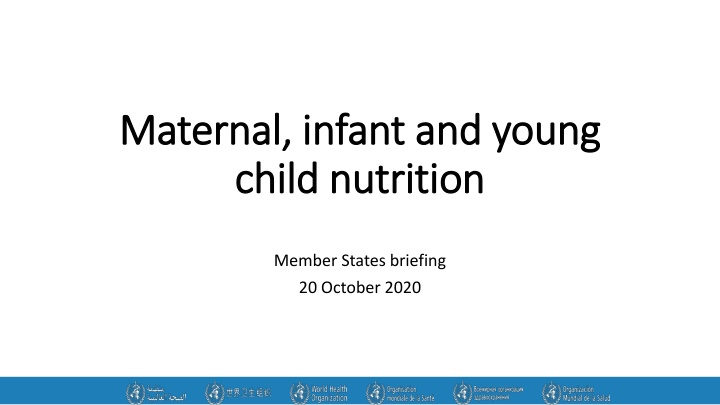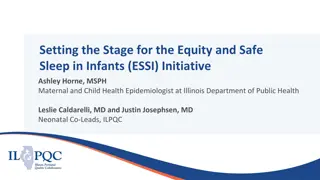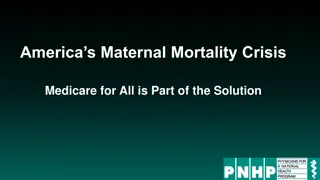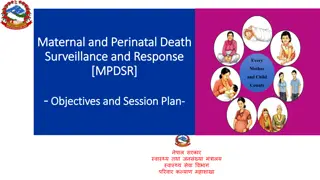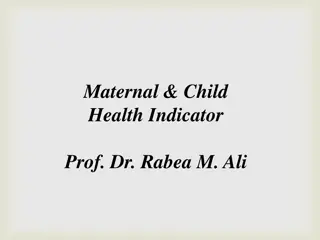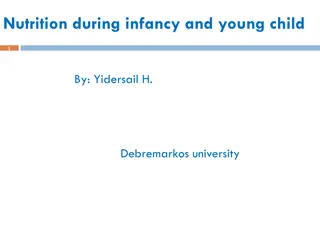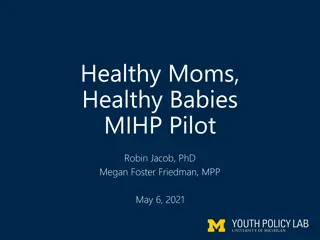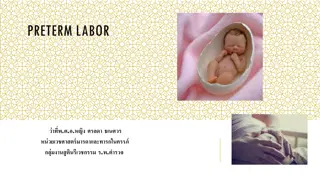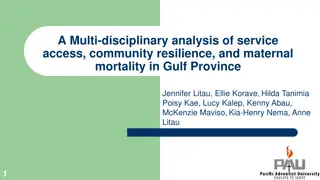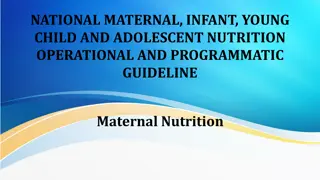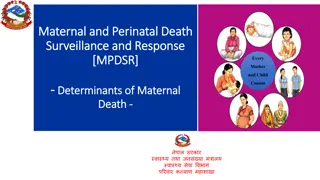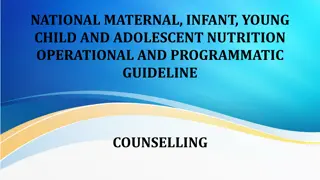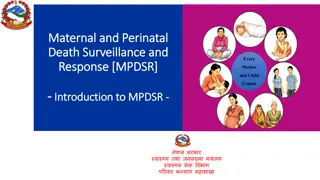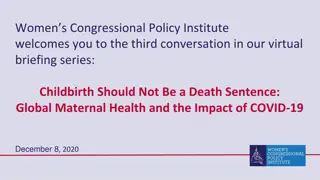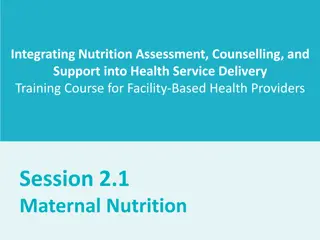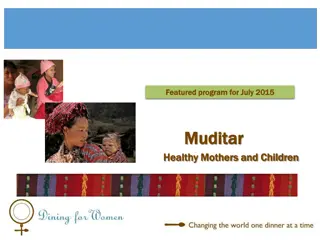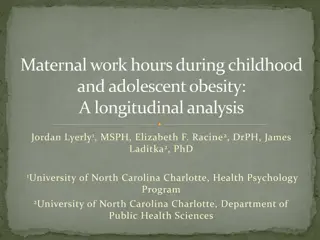Maternal and Infant Nutrition Briefing at Member States
This briefing discusses actions taken to implement plans on maternal, infant, and young child nutrition, focusing on policy environment, health interventions, multi-sectoral actions, resource allocation, and monitoring. It also addresses concerns regarding conflicts of interest and digital marketing in promoting breast-milk substitutes.
Download Presentation

Please find below an Image/Link to download the presentation.
The content on the website is provided AS IS for your information and personal use only. It may not be sold, licensed, or shared on other websites without obtaining consent from the author.If you encounter any issues during the download, it is possible that the publisher has removed the file from their server.
You are allowed to download the files provided on this website for personal or commercial use, subject to the condition that they are used lawfully. All files are the property of their respective owners.
The content on the website is provided AS IS for your information and personal use only. It may not be sold, licensed, or shared on other websites without obtaining consent from the author.
E N D
Presentation Transcript
Maternal Maternal, infant and , infant and young child child nutrition nutrition young Member States briefing 20 October 2020 07/03/2025 1
Maternal Maternal, infant and , infant and young young child child nutrition at EB 146 nutrition at EB 146 The report describes actions taken in the last few years to carry out the comprehensive implementation plan on maternal, infant and young child nutrition, with actions on: Creating a supportive policy environment Delivering effective health and nutrition interventions Stimulate multi-sectoral actions beyond the health sector Increase human and financial resources for nutrition interventions Improve monitoring and evaluation The report also documents some progress on implementing national legislation regarding the Code, but points out growing areas of concern with conflicts of interest in health professional organizations and increasing use of digital marketing to promote breast-milk substitutes.
Draft Draft decision decision proposed proposed in document EB 146/24 in document EB 146/24
Draft decision as amended in EB146 Draft decision as amended in EB146
Maternal Maternal, infant and , infant and young young child childnutrition at WHA 73 nutrition at WHA 73
Draft decision proposed for WHA 73 (1 Draft decision proposed for WHA 73 (1) ) The Seventy-third World Health Assembly, having considered the report on the Comprehensive implementation plan on maternal, infant and young child nutrition, and recalling the mandates given in resolutions and decisions on: the International Code of Marketing Breastmilk Substitutes (WHA34.22 (1981), WHA35.26 (1982), WHA37.30 (1984), WHA39.28 (1986), WHA41.11 (1988), WHA43.3 (1990), WHA45.34 (1992), WHA46.7 (1993), WHA47.5 (1994), WHA49.15 (1996), WHA54.2 (2001), WHA58.32 (2005), WHA59.21 (2006), WHA61.20 (2008) and WHA63.23 (2010)); the WHO/UNICEF Global Strategy for infant and young child feeding (WHA55.25 (2002)); the WHO Global Comprehensive Implementation Plan on Maternal, Infant and Young Child Nutrition (WHA65.6 (2012)); Ending inappropriate promotion of foods for infants and young child (WHA69.9 (2016) and WHA71.9 (2018)); and Ending childhood obesity (WHA69(12) (2016) and WHA70(19) (2017)), decided to:
Draft decision proposed for WHA 73 (2 Draft decision proposed for WHA 73 (2) ) Streamline future reporting requirements on maternal, infant and young child nutrition, through biennial reports until 2026 2030 (to be issued in 2022, 2024, 2026, 2028, and 2030 respectively); and Request the Director-General to review current evidence collect data and prepare a comprehensive report to understand the scope and impact of digital marketing strategies for the promotion of breast-milk substitutes substitutes and develop guidance to assist Member States to address any promotion of BMS that may not be in accordance with the International Code of Marketing of Breastmilk Substitutes and subsequent relevant WHA resolutions to the 75thWorld Health Assembly (2022), through the Executive Board.
